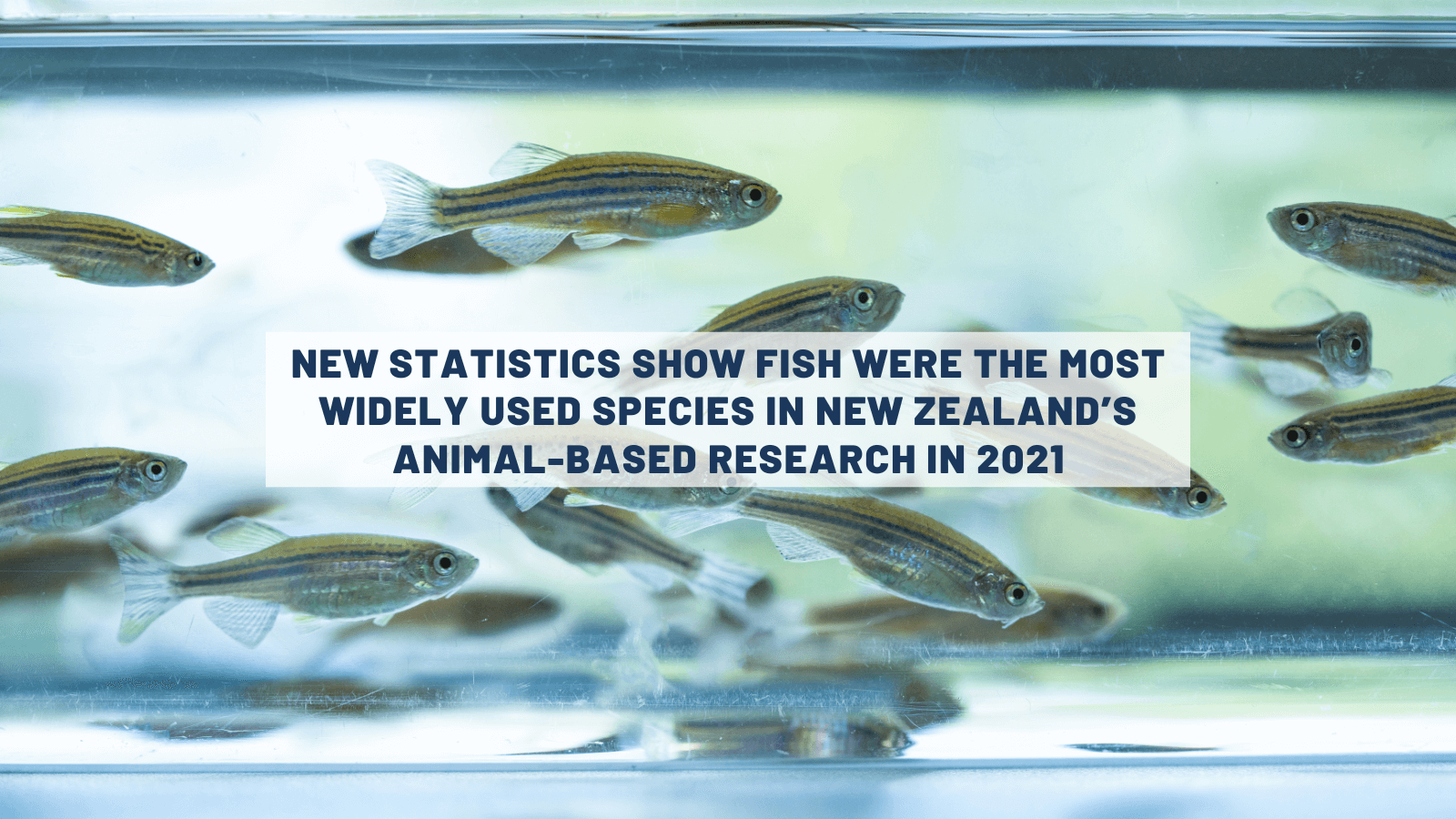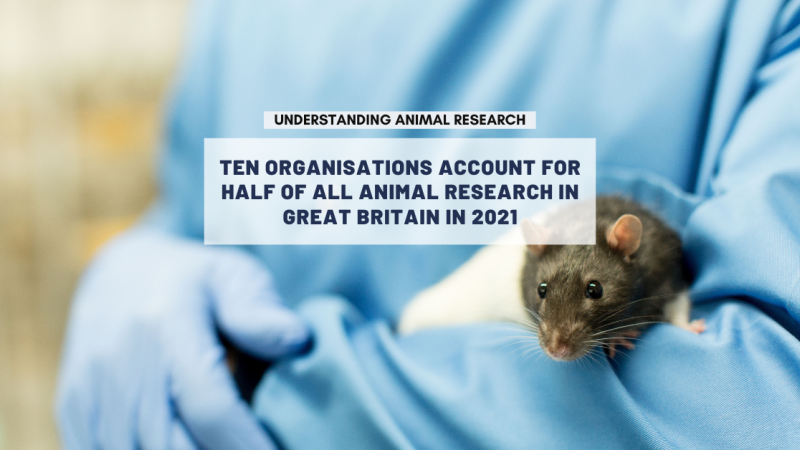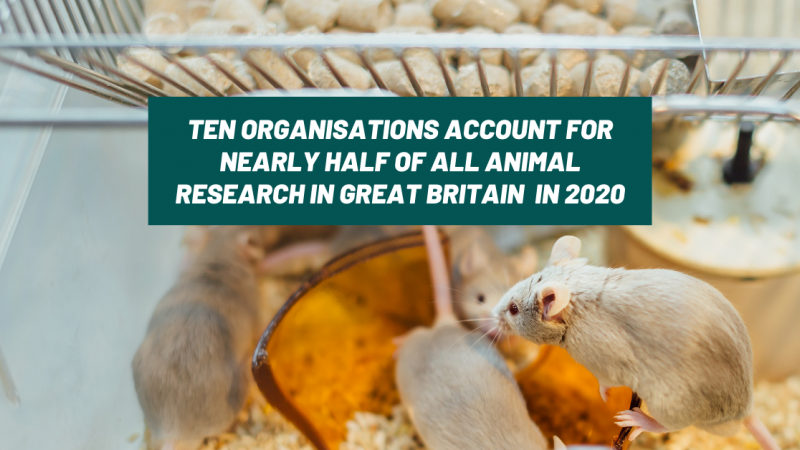New Zealand’s Ministry for Primary Industries (MPI) released annual statistics on the number of animals used in research, testing and teaching (RTT) in New Zealand in 2021 on Tuesday 30 May 2023. The full release can be found at www.mpi.govt.nz
The figures show that 309,872 animals were used in 2021. This is an increase from 245,522 used in the first year of the COVID-19 pandemic, 2020.
There was a large increase in the number of animals rehomed at the end of their involvement in research, testing and teaching, a 22-fold increase on the 2020 figure of 172 animals.
Types of animals
Fish were the most used animal in research, testing and teaching in 2021, a small increase of 6% from 2020. Cattle, sheep, mice, rabbits and fish accounted for 86% of all animals used in research, testing and teaching in 2021.
Fish were used mainly by universities in basic biological research and animal husbandry, which involves little harm to the animals. For example, fish in a coral reef were studied to see how they are affected by different environmental conditions by examining their stomach contents. A subsequent study simulated healthy and unhealthy reef conditions in the laboratory to understand how unhealthy reefs alter fish behaviour.
Production animals such as cattle and sheep are primarily used in veterinary research, basic biological research, and teaching. They are also sometimes used as models to study diseases that affect both animals and humans. For example, Batten disease is a genetic, neurodegenerative disorder that causes dementia, blindness and premature death in both humans and sheep. Gene therapies that have successfully treated Batten disease in cells have also been trialled in sheep. The sheep were treated before showing the first signs of disease and then monitored closely to check for impacts.
Mice are primarily used in medical research, basic biological research and testing the safety and efficacy of animal health products. For example, to study how different cells and their connected pathways in the brain grow and change in response to changes in the environment, particularly the ways that these may differ with neurodiversity.
Unusually, a large number of wild rabbits, 55,000, were used in 2021 in an environmental impact study to assess the risks of using sodium fluoroacetate (1080) in baits.
Why the animals were used
New Zealand’s statistics count the number of ‘manipulations’ that animals undergo for scientific reasons. That means any experiment, process or change experienced by an animal.
The main purpose for which animals were used in 2021 was environmental management (23% of all manipulations) with 71,151 animals in this category, most of which were wild rabbits involved in the study described above.
Basic biological research (the study of living things and their vital processes) saw 63,762 manipulations, 21% of the total. Veterinary research (research aimed at improving the health and welfare of production and companion animals) saw 26,989 manipulations, 9% of the total. Teaching (for biology, medicine, rural or veterinary students) involved 41,325 manipulations, 13% of the total.
Animals were also used in animal husbandry, testing, medical research, and species conservation.
Animals bred but not used in research, testing and teaching
The total number of animals that were bred for research, testing and teaching purposes but were neither manipulated nor otherwise used and were subsequently killed was 178,569.
All these animals were treated with the same duty of care as animals used for research and teaching. This includes provision of 24-hour veterinary care, dedicated animal technicians and environmental enrichment.
These animals are not included in the overall total of animals in the Animal Use Statistics, because they did not undergo manipulations.
Reasons that animals were bred for research but could not be used include:
- They were the wrong sex for the research
- They were involved in creating or maintaining genetically altered lines, but did not acquire the required genetic alteration
- The number was over and above the number needed for the research study (litter sizes can be unpredictable)
- Animals used to sustain inbred colonies, ensuring adequate diversity and timely supply for research and teaching (this includes breeding stock and neonatal losses)
- ‘Sentinel animals’ used for health screening of other animals in the laboratory
Impacts of COVID-19
Although institutions were still impacted by lockdowns due to COVID-19, many New Zealand laboratories were able to continue important work, when compared to 2020. Therefore, the 2021 figures have increased from 2020, but they are still difficult to compare with previous statistics.
New Zealand’s regulations and the 3Rs
Animal-based research, testing and teaching is strictly regulated in New Zealand and the activities described here can only be carried out under the requirements of the Animal Welfare Act 1999. Every manipulation, from a simple blood test to major surgery, can only be carried out with prior approval of an animal ethics committee (AEC). These committees assess whether the potential benefits of the research outweigh the harms to the animals. They must also give due consideration to the ethical principles called the 3Rs: Replacement (if the research can be done with non-sentient or non-living alternatives); Reduction (decrease the number of animals used to the minimum necessary); and Refinement (assessing the way the animals are used, so that negative welfare impacts are minimised and positive welfare is maximised). Animals should only be used if suitable replacements are not available. Where possible, and it is in the animal’s best interest, re-homing the animal after the research is complete should be considered. Cosmetic testing
Testing cosmetics products, cosmetics ingredients or household products has been banned in New Zealand since 2015, and it is generally understood that prior to this ban animals had never been used in such tests in New Zealand.
Contributions
Animal-based research contributes to our medical and veterinary knowledge, has benefits for humans, animals and ecosystems, and is vital for teaching practical skills in life sciences and animal welfare. In New Zealand, many large animals, birds and fish are studied in their usual environment and, as long as it is safe, are returned to their flock, herd or natural environment when the studies are concluded. Animals bred and used in the laboratory are studied alongside other techniques such as cell cultures, human studies and computational models. These methods are used – often in tandem – to answer the key biological questions necessary to understand and treat disease.
Last edited: 31 May 2023 13:07




